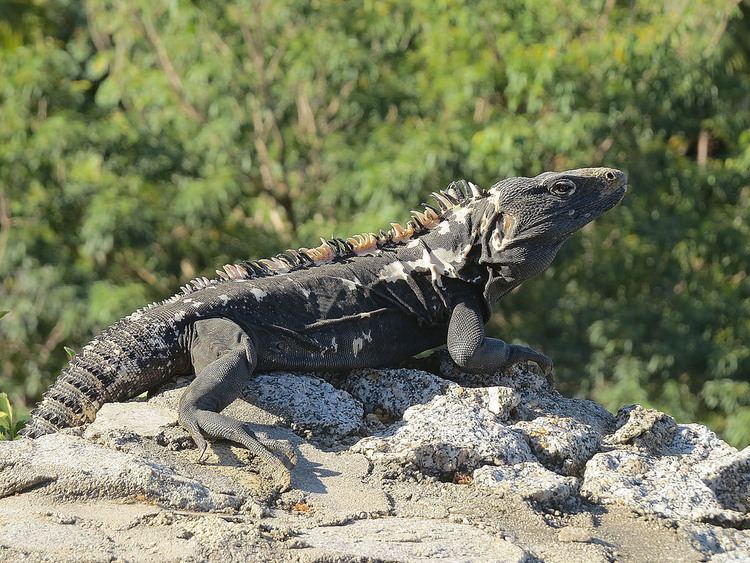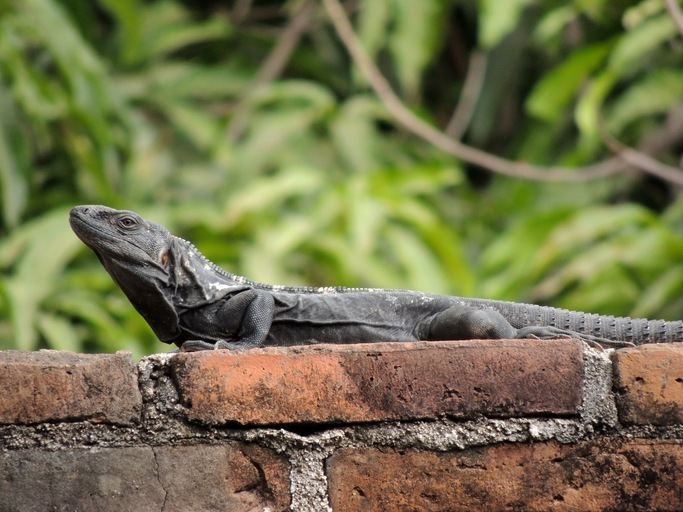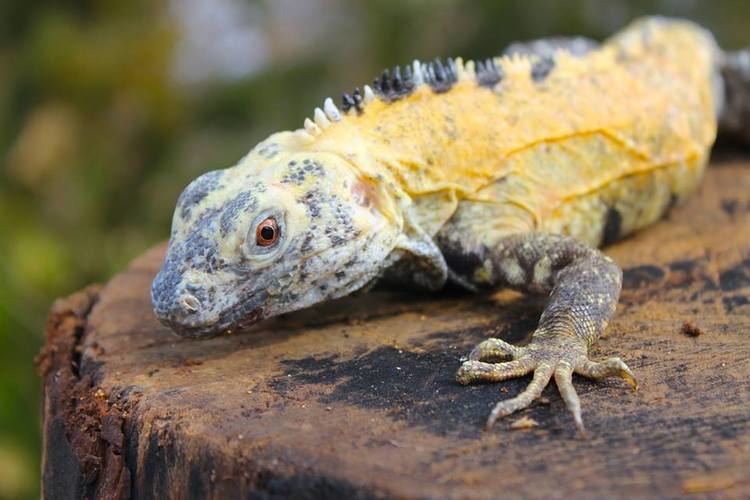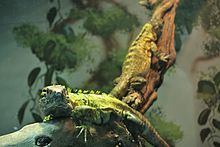Subphylum Vertebrata Suborder Iguania Scientific name Ctenosaura pectinata Rank Species | Phylum Chordata Higher classification Ctenosaura | |
 | ||
Similar Ctenosaura, Reptile, Ctenosaura similis, Iguanidae, Ctenosaura melanosterna | ||
Undefeated reptiles blue ctenosaura pectinata
Ctenosaura pectinata, commonly known as the Mexican spiny-tailed iguana or the Mexican spinytail iguana, is a moderate-sized lizard endemic to western Mexico.
Contents
- Undefeated reptiles blue ctenosaura pectinata
- Undefeated reptiles ctenosaura pectinata banana phase
- Geographic range
- Taxonomy
- Description
- Distribution
- Behavior
- Reproduction
- Threatened status
- References

Undefeated reptiles ctenosaura pectinata banana phase
Geographic range

In Mexico it is found from central Sinaloa to southern Chiapas. It has also been introduced to the United States in the very southern tip of the state of Texas and in the state of Florida.
Taxonomy

The Mexican Spinytail Iguana was first described by German zoologist Arend Friedrich August Wiegmann in 1834. The generic name, Ctenosaura, is derived from two Greek words: ctenos (Κτενός), meaning "comb" (referring to the comblike spines on the lizard's back and tail), and saura (σαύρα), meaning "lizard". Its specific name is the Latin word pectinata meaning "combed", also referring to the comblike spines on the lizard's back. The genus it belongs to represents the most diverse group of iguanas with 15 currently recognized species. These species inhabit lowland (below 1200m elevation) dry forests on both coasts of Mexico and Central America. All species of Ctenosaura fall within one of seven clades. Distributions of these clades fall geographically within well established areas. Closely related species show allopatry whereas species from divergent clades show sympatry. Phylogenic study shows this species to be most closely related to C. acanthura, the Northeastern spinytail iguana. Additional mitochondrial DNA research is being performed to determine whether additional subspecies may exist. Because of the different human cultures throughout this species distribution, the clades are being evaluated for their impact from humans. For example, these iguanas are not eaten in their northern ranges by humans as they are in the southern ranges, but the hatchlings in the southern ranges have a better survival rate due to better environmental conditions.
Description

Mexican Spinytail Iguanas have distinctive keeled scales on their long tails, which gives them their common name. They are one of the larger members of the genus Ctenosaura, capable of growing to 1.3m (4.3 feet) in length, with females being slightly smaller than males at 1 metre (3.3 ft), and are typically brown or grey-brown in coloration with a yellowish ventral surface. They have a crest of long spines which extend down the center of their back. Hatchlings are often a bright green color with no pattern and darken as they age.
Distribution
The Mexican Spinytail Iguana is native to Western Mexico from Sinaloa to Oaxaca.

This iguana has been introduced to Brownsville, Texas and South Florida and reproduces in the wild in several feral populations. On the south-eastern Florida coast, these iguanas have been found on Key Biscayne, Hialeah, and in Broward County. On the south-western Florida coast, it has been reported on Gasparilla Island. It is currently estimated as of December 2007 that there are 12,000 iguanas on this island, descended from a trio of pet lizards released by a resident in the 1970s.

They are regarded as a "nuisance animal" on Gasparilla island because the iguanas eat ornamental flowers and shrubs and prey on nesting birds and sea turtle eggs. They have been known to chew through electrical and telephone cables. They may also carry salmonella and their prehistoric appearance has been known to scare residents. As the iguanas like to burrow in the sand it is feared that their tunnels could cause dunes and even seawalls to collapse and deprive the island of crucial protection from landfalling hurricanes.
Behavior

The Mexican Spiny-tailed iguana is a social lizard, which has adapted to living in groups as opposed to other species of Ctenosaura which tend to be solitary animals. These iguanas are excellent climbers, and prefer a rocky habitat with plenty of crevices to hide in, rocks to bask on, and nearby trees to climb. They are diurnal and fast moving, employing their speed to escape predators but will lash with their tails and bite if cornered. They are often found dwelling near or in towns in their native Mexico and where they have been introduced elsewhere.

They are primarily herbivorous, eating a variety of flowers, leaves, stems, and fruit, but they will opportunistically eat small animals, eggs, and arthropods.
Reproduction
Mating occurs in the spring. Males show dominance and interest by head bobbing, eventually chasing the female until he can catch her and subdue her. Within eight to ten weeks, the female will dig a nest and lay clutches of up to 50 eggs in a burrow of loose soil. These eggs hatch in 90 days with the bright green babies digging their way out of the sand.
Threatened status
Ctenosaura pectinata is used as a traditional food source in its native Mexico. Although not listed on the IUCN Redlist, the species is listed on the Mexican Red List NOM-059-2001 as threatened and it is currently illegal to hunt them in Mexico. This protection does not apply to areas in North America where they have been introduced, however.
Although hunting, trapping, and killing of these iguanas is illegal throughout Mexico; the Balsas depression along the borders of the states Michoacán and Guerrero is one of the largest illegal hunting and trading areas. The remoteness of the areas and lack of enforcement of the laws is seen as the main reason. A study is being conducted by the Instituto de Biologia, UNAM, to solve the over-exploitation problem and to determine if the iguanas can be successfully farmed as a food source similar to the Green Iguana and the closely related Ctenosaura similis.
